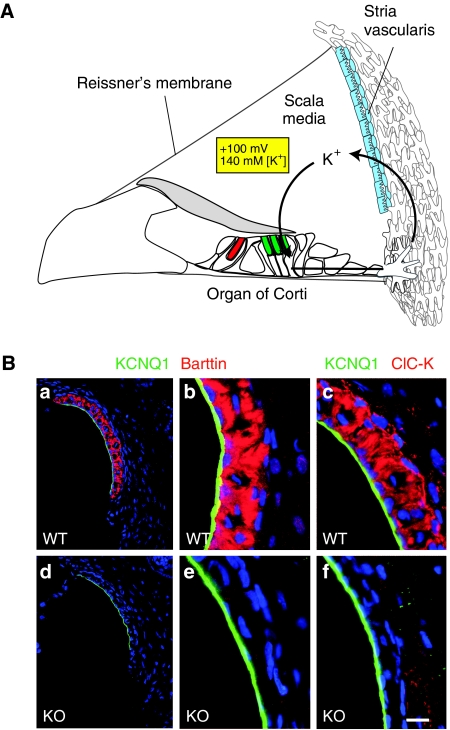Figure 1.
ClC-K and its β-subunit barttin in the cochlea. (A) Model for potassium recycling in the inner ear. The stria vascularis (blue) establishes the high K+ concentration of 140 mM and the positive potential of +100 mV of the endolymph that fills the cavity of the scala media. Both properties are important for the depolarizing K+ current through apical mechanosensitive channels of inner (red) and outer (green) hair cells. The apical membrane of these sensory cells contacts the endolymph, whereas their basolateral membrane (separated by tight junctions) is surrounded by perilymph that displays the usual low potassium concentration and zero potential of normal extracellular space. In the K+-recycling model, K+ is transported back to the stria vascularis through a gap junction system (Wangemann, 2006). (B) Immunohistochemistry on stria vascularis from WT (a–c) and Bsndlox/lox Sox10::Cre (d–f) mice with antibodies against barttin (a, b, d, e; red) and ClC-K (c, f; red). Apical membranes of marginal cells are stained with KCNQ1 (green). Nuclei are stained with TO-PRO-3 (blue). Scale bar: 65 μm (a, d) and 15 μm (b, c, e, f).

